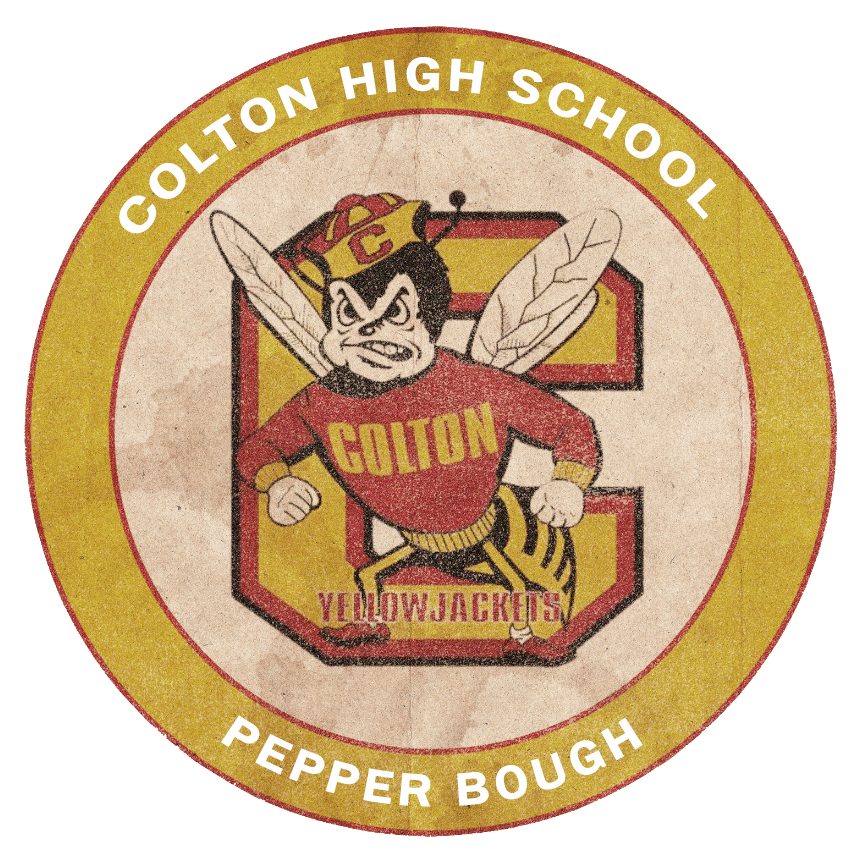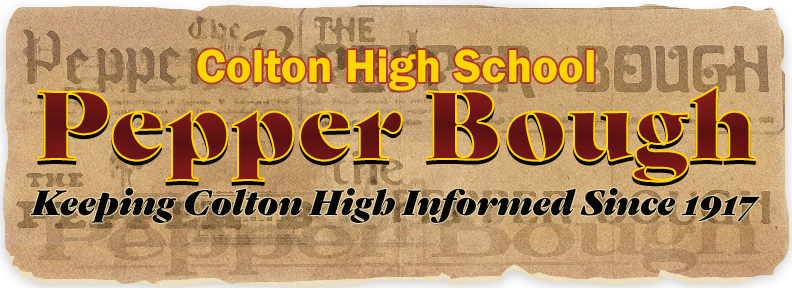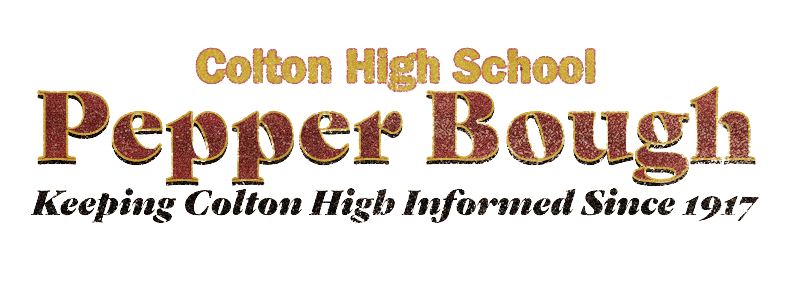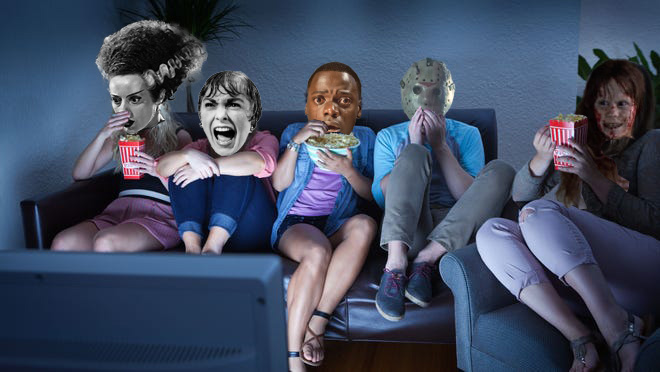Opinion: Horror movies are popular for many reasons, but only one matters
A look at the history of horror films and the psychology behind their popularity
Watching horror movies is the perfect way to deal with a wide range of fears and anxieties, especially when watched with family. (Featured, from left: Elsa Lanchester from “The Bride of Frankenstein,” Janet Leigh from “Psycho,” Daniel Kaluuya from “Get Out,” Jason Vorhees from “Friday the 13th,” and Linda Blair from “The Exorcist.”)
In 2020, horror films increased in popularity on streaming platforms as the world experienced the COVID-19 pandemic, becoming a way for people to escape from reality.
The pandemic changed a lot of people’s lives, as they experienced more anxiety and fear than they ever have. Horror has always been a relief for many, a means to grapple with those anxieties and fears in the relatively safe space of fiction.
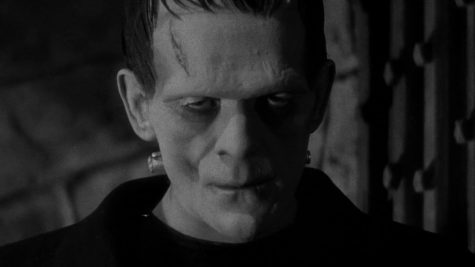
From the very beginning of movies, horror films were being made. In 1896, Georges Méliès directed what many historians consider the first horror film, “The House of the Devil.” In the early 1920s, German expressionist horror movies, like “The Cabinet of Dr. Caligari” and “Nosferatu” explored anxieties in the aftermath of World War I.
In America, however, horror movies did not become a major part of popular culture until “Frankenstein” in 1931. The Universal monster movies, which went on to produce films starring Dracula, the Wolf Man, the Mummy, the Invisible Man, and the Creature of the Black Lagoon, were dark fantasies that helped Americans facing the Great Depression to find release of their day-to-day fears of survival.
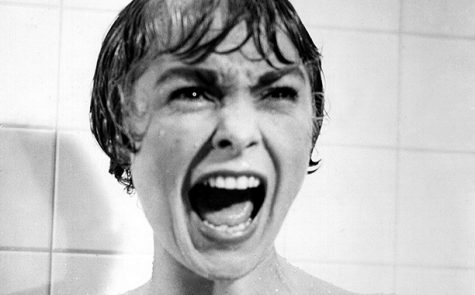
The 1950s, with post-Atomic bomb terror, brought sci-fi horrors like “The Blob,” “Them,” and “The Thing from Another World.” And as the 1960s began, Alfred Hitchcock’s “Psycho” found terror in everyday things like taking showers.
For as popular as horror films were through the 1960s, by the end of that decade, the psychedelic gothic nightmares based on Edgar Allan Poe stories and starring Vincent Price had become stale and campy. And with the news coverage of the Vietnam War putting real life body counts in American living rooms every night over dinner, horror films became more popular than ever with the arrival of three very different, but very relevant movies: “Night of the Living Dead” (1968), “The Exorcist” (1973), and “The Texas Chainsaw Massacre” (1974).
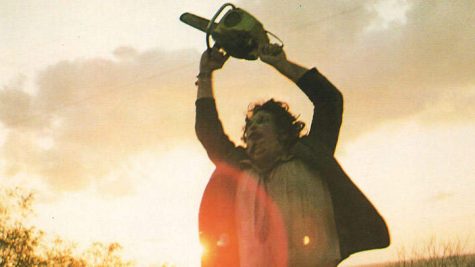
Since “The Exorcist,” more and more horror movies have been released with better and better technology to look more real year after year.
Horror movies also became more diverse, spreading out into a host of subgenres, like comedy-horror, dark fantasy, gothic, Lovecraftian, paranormal, post-apocalyptic, psychological, and slashers.
One reason these movies do so well is they allow people to explore their own dark sides. Usually, it is very taboo to discuss dark fascinations and interests in daily life. Horror movies are so diverse and can cover almost any dark topic, that viewers are given license to go any direction they wish without fear.
Horror movies also give viewers a sense of power by making them believe they are different from a film’s victim. While watching, most of us most likely cringe at the choices victims are making. We swear we would do something differently or better to survive, which helps us feel superior, and reduces fear.

Watching things that scare us can also teach us how to cope. Usually, if someone is an avid horror movie watcher, it takes a lot more than a serial killer movie to scare them. This is because the more you watch scary movies the more you learn to deal with the fear of watching and you learn to regulate this emotion as you learn to deal with different situations.
Horror movies are also well-liked for the same reason as roller coasters. Both provide increased adrenaline. This rush puts the viewer in “fight or flight” mode and the body reacts. Also, horror movies not only provide an adrenaline rush, but also a feeling of pleasure for surviving the viewing.
With the thrilling nature of these films, combined with the way they challenge our anxieties, it is of little surprise that horror movies predominantly attract younger audiences, with the majority of viewers under the age of 25.
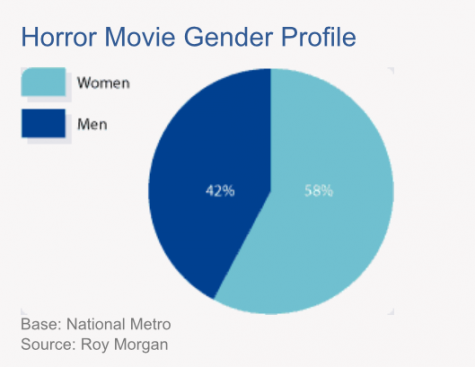
More surprising is that horror audiences tend to be 42% women and 58% men. That is almost a 50-50 split between genders, which seems strange due to the fact that popular assumptions about horror movies are that they are mostly male power fantasies. Whether true or not, the need for power and control is not only for men.
While there are a number of reasons we watch horror movies, for me the most important is the least obvious: connection.
When I was younger, every weekend me and my family would cuddle up on the couch and watch the reruns of scary movies. My favorite part of watching scary movies was being able to hold my mother’s hand and know that I was safe.
Horror movies became more than a fast adrenaline rush, or the desire to feel goosebumps with every jump scare.
They became a tradition for me and my family, and they created long-lasting memories.
As we scooched closer together when we were afraid, we grew closer as a family, too.
Horror movies appeal to people for many reasons, but for me they will always be about creating stronger bonds that teach you more about yourself.
Recently, the CHS Publications Department experienced a major theft as over $20,000 in photography equipment was stolen from our studio over Spring Break. This included all cameras. Any amount you donate will help rebuild our program. Thank you!
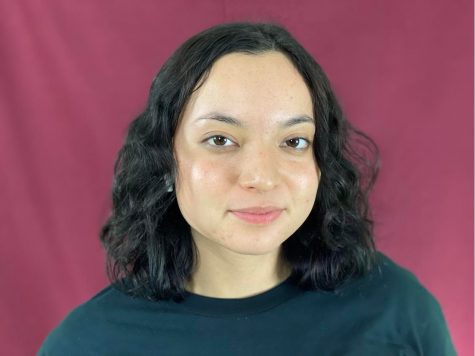
Sadie Larios is a senior at Colton High School set to graduate in 2022. She is an avid movie watcher and music listener. When she is not at...

